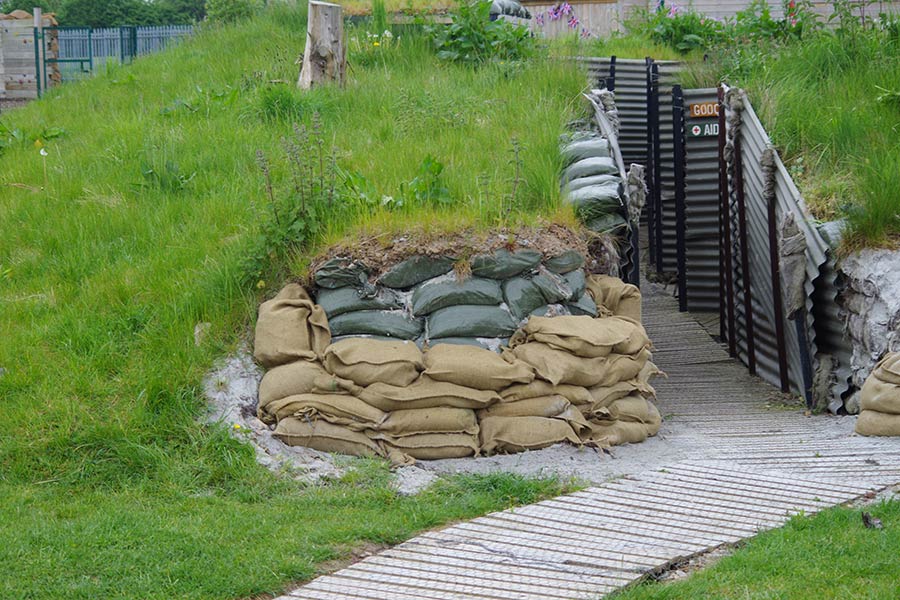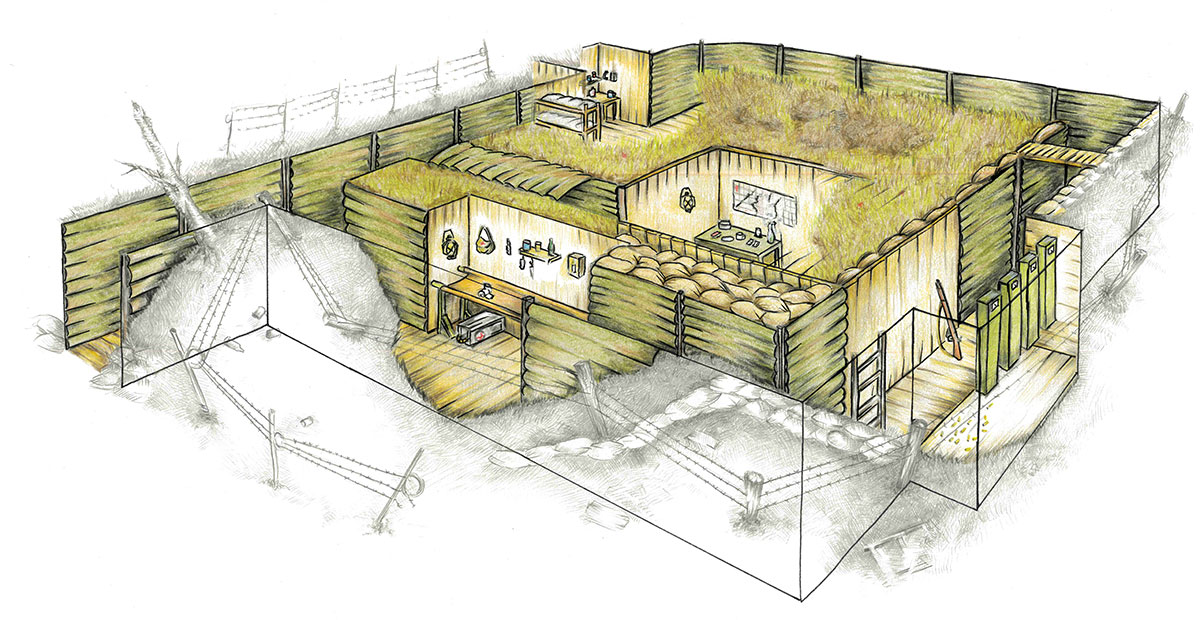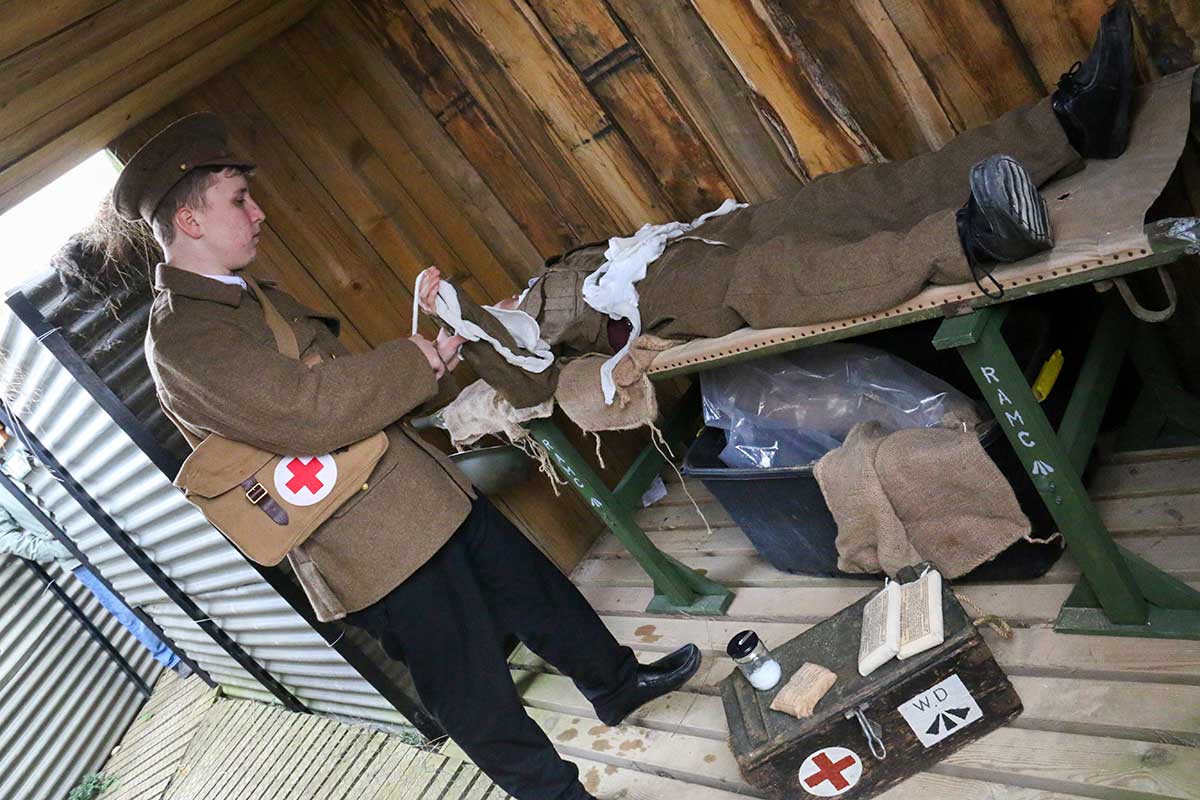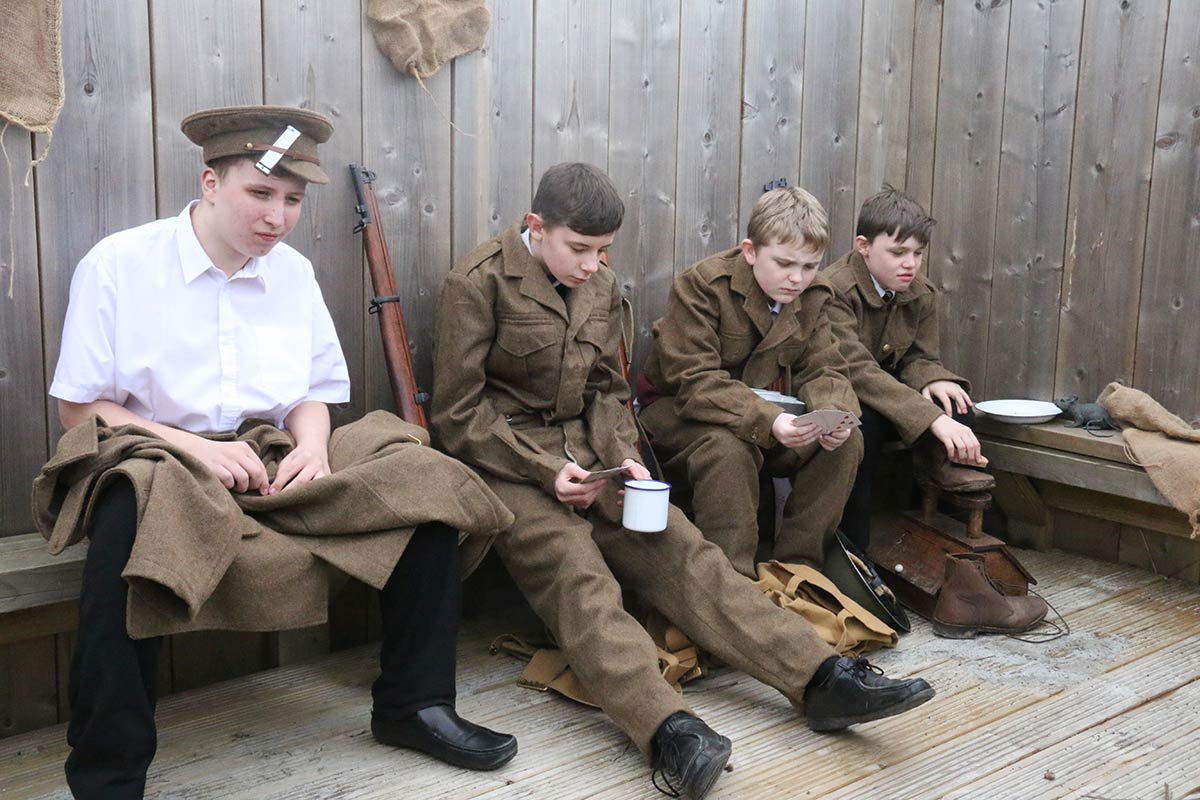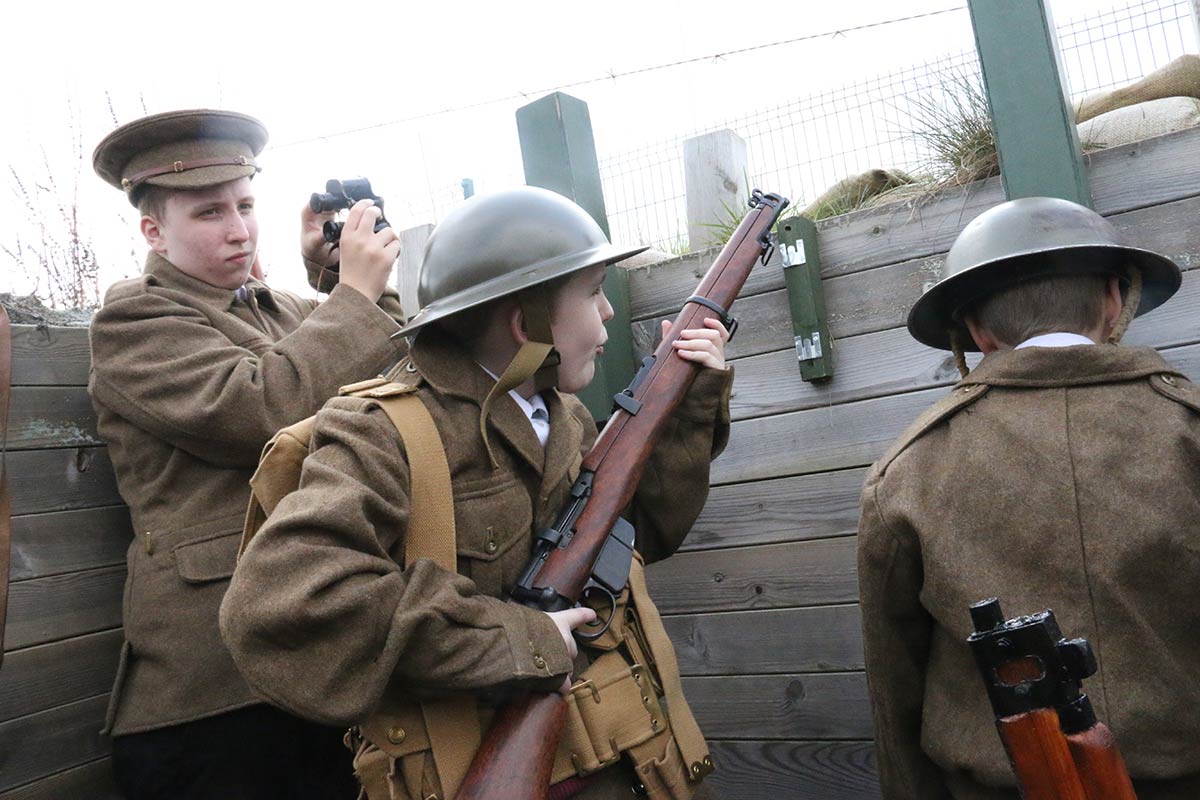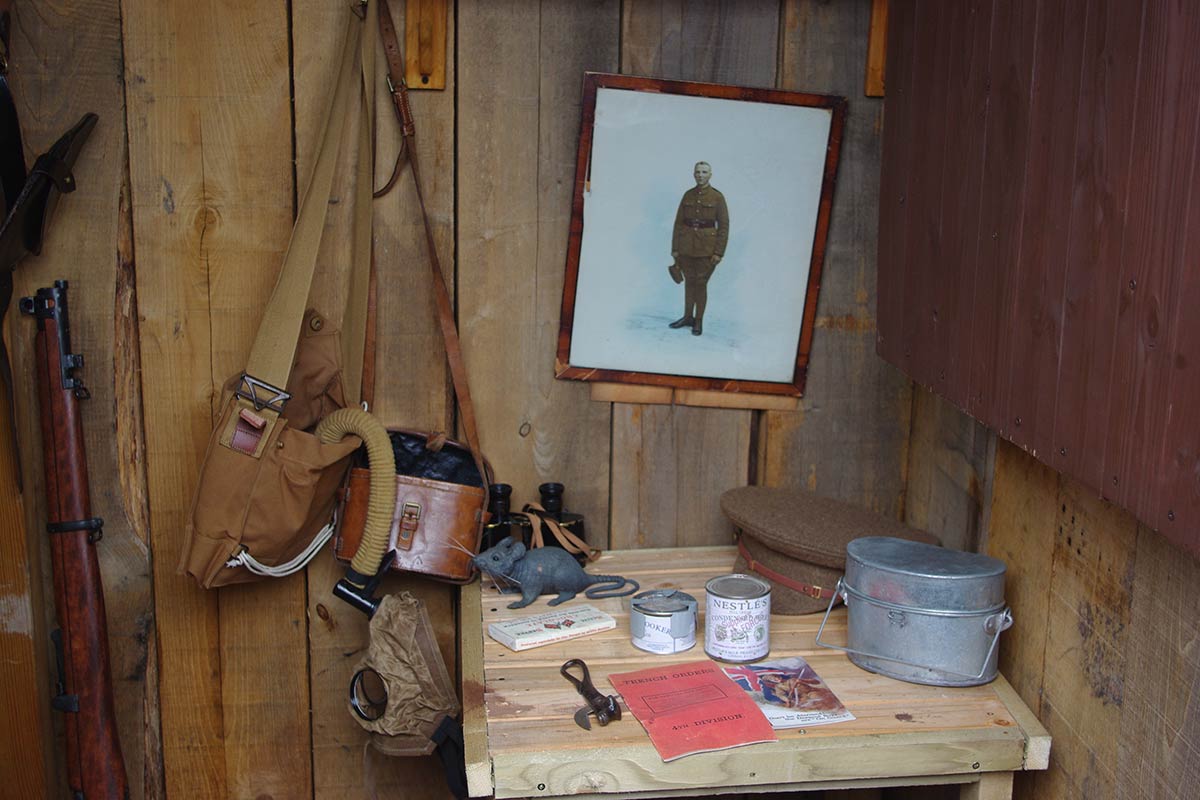There are a number of key areas within the trench that offer specific insights into what life was really like for the men that lived there.
There are four areas shown below:
| In each area you will find ‘hotspots’ that you can click on to find out more information. |

